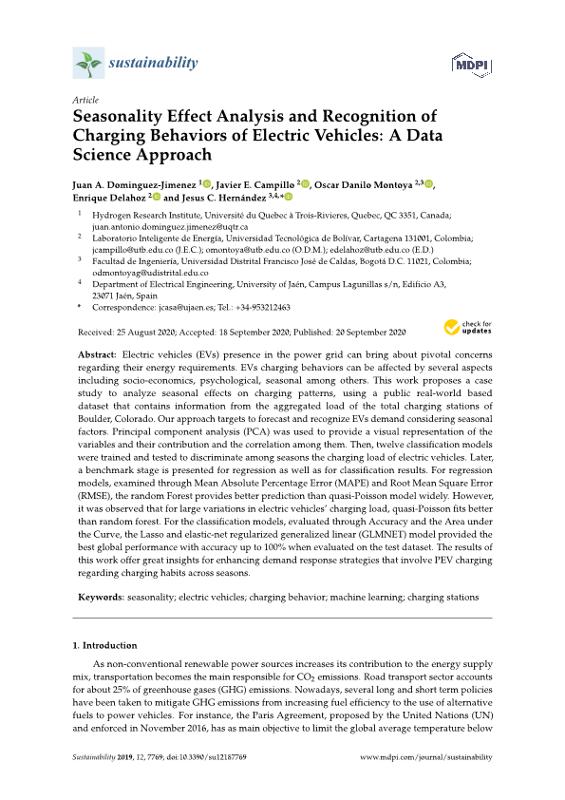Abstract
Electric vehicles (EVs) presence in the power grid can bring about pivotal concerns regarding their energy requirements. EVs charging behaviors can be affected by several aspects including socio-economics, psychological, seasonal among others. This work proposes a case study to analyze seasonal effects on charging patterns, using a public real-world based dataset that contains information from the aggregated load of the total charging stations of Boulder, Colorado. Our approach targets to forecast and recognize EVs demand considering seasonal factors. Principal component analysis (PCA) was used to provide a visual representation of the variables and their contribution and the correlation among them. Then, twelve classification models were trained and tested to discriminate among seasons the charging load of electric vehicles. Later, a benchmark stage is presented for regression as well as for classification results. For regression models, examined through Mean Absolute Percentage Error (MAPE) and Root Mean Square Error (RMSE), the random Forest provides better prediction than quasi-Poisson model widely. However, it was observed that for large variations in electric vehicles’ charging load, quasi-Poisson fits better than random forest. For the classification models, evaluated through Accuracy and the Area under the Curve, the Lasso and elastic-net regularized generalized linear (GLMNET) model provided the best global performance with accuracy up to 100% when evaluated on the test dataset. The results of this work offer great insights for enhancing demand response strategies that involve PEV charging regarding charging habits across seasons.














